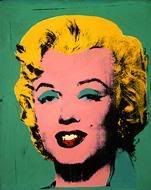Gilbert Stuart painted “George Washington” in 1795 utilizing oil on canvas. In order to create this composition he utilized emphasis and subordination, asymmetry and proportion.
Emphasis is used to draw the viewer’s attention to certain aspects of the work, while subordination is used to make other parts of the composition less appealing so as not to take the viewer’s attention away (134). These techniques highlight Washington’s face. The painting is very dark so the artist uses light colors on and around the face to highlight it. Asymmetry in artwork is when both sides of the composition do not match (129). In this work, Washington is set slightly to the left and the right side of the painting is relatively empty which draws the focus again to the face. Proportion in a composition refers to the size of the parts in relation to what is considered normal (137). In this artwork, the body of Washington appears much larger than the head again drawing attention to the face.
In 1962, Andy Warhol created “Green Marilyn” with silkscreen on synthetic polymer paint on canvas. Like Stuart he uses asymmetry and color to emphasize the subject’s face; however he also uses variety and rhythm.
Like Stuart, Warhol focuses on the face of his subject by setting it slightly off center making the artwork asymmetrical. The use of color does two things in this work. It is used to emphasize the features of the face, he makes the lips bright red, the eyelids teal and the hair bright yellow. Each of these colors is set off with the use of shadows which draws the viewer’s attention. The use of color also adds variety, difference that provides interest (122). The colors in this artwork are very bold and they contrast which makes the colors a distraction from the actual face from the subject. The various colors actually make the features appear to stand alone and not as part of a whole. Finally, Warhol uses rhythm, or repetition (141). He uses the same color in the background and for the eyes which draws the two colors together.
In conclusion, both works are portraits that focus on the subject’s face, however the design principles are used differently which is evident through the differences in the works.
Wednesday, September 26, 2007
Wednesday, September 19, 2007
Assignment #2
“Green Marilyn” by Andy Warhol in 1962 and “George Washington” by Gilbert Stuart in 1795 are both portraits of famous Americans. The first is a silkscreen on synthetic polymer paint on canvas and the second is oil on canvas.
Contour lines, lines drawn to record boundaries (83), are used to set off their subject’s faces. Warhol uses a well defined the line between the face and hair along the forehead making the hair look like a cap, not apart of the face. Stuart uses blurred lines to outline the entire portrait from the background.
Both artists utilize chiaroscuro, Italian for light/dark (92). Warhol uses it to show the lighting coming from the upper left by showing shadows under the eyelashes, and below the chin. Washington’s face is lit from the front right, as if with a spotlight, made obvious with shadows.
In both portraits the face is a figure, a shape used to detach and focus on, and the ground, the surrounding visual information the figure stands out from (89), is plain. This makes the face the focal point.
The major difference between these works is the use of color. Warhol uses mostly tertiary colors, mixtures of primary color and adjacent secondary colors on the color wheel (95). The colors are also very intense, pure colors not mixed with much grey (96). This combination makes color the most obvious aspect of the work. Stuart uses varying degrees of white and black and values of red. Values of color refer to relative lightness or darkness (96). Red is mixed with grey to come up with skin tone, cheeks and a small amount in the background to highlight the face.
Contour lines, lines drawn to record boundaries (83), are used to set off their subject’s faces. Warhol uses a well defined the line between the face and hair along the forehead making the hair look like a cap, not apart of the face. Stuart uses blurred lines to outline the entire portrait from the background.
Both artists utilize chiaroscuro, Italian for light/dark (92). Warhol uses it to show the lighting coming from the upper left by showing shadows under the eyelashes, and below the chin. Washington’s face is lit from the front right, as if with a spotlight, made obvious with shadows.
In both portraits the face is a figure, a shape used to detach and focus on, and the ground, the surrounding visual information the figure stands out from (89), is plain. This makes the face the focal point.
The major difference between these works is the use of color. Warhol uses mostly tertiary colors, mixtures of primary color and adjacent secondary colors on the color wheel (95). The colors are also very intense, pure colors not mixed with much grey (96). This combination makes color the most obvious aspect of the work. Stuart uses varying degrees of white and black and values of red. Values of color refer to relative lightness or darkness (96). Red is mixed with grey to come up with skin tone, cheeks and a small amount in the background to highlight the face.
Saturday, September 15, 2007
Assignment #1 ART 101 On-Line Museum Visit
Creative Notebook
What are the two main balances the text in Chapter 5 describes? The two main balances are Symmetry and Asymmetry.
Symmetry: "Propeller Heads" a photograph of a sculpture by David Baker 2004
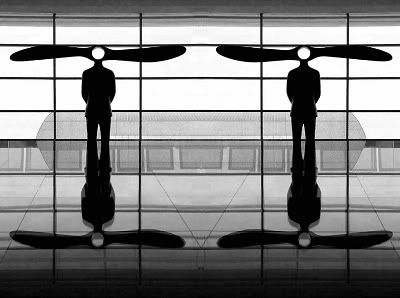
According to the text, Symmetrical balance is the implied center of gravity is the vertical axis, an imaginary line drawn down the center of the composition (125). In this photograph, the image is the same on either side of the center making it symmetrical. I also find it interesting due to the reflection on the sculptures in the floor.
Asymmetry: "Mobile" a sculpture by Alexander Calder 1948
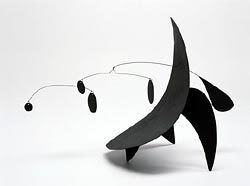
According to the text, an asymmetrical composition has two sides that do not match (129). This sculpture is very heavy on the right with only small objects on the left that do not balance it out, thus making it asymmetrical.
Chapter 3 discusses Themes in Art. The following are three works of art I enjoy that show three of the themes.
The first is the Sacred Realm (52)
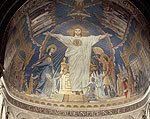
Themes in the Sacred Realm depict faith. I choose the mosaic of Christ in Majesty that is on the ceiling at the Basilica at Sacre-Couer. It was created from 1920-1922. I have not been able to find the artist however. When my wife and I went to Paris last year, this mosaic really stood out to me. It was huge and very impressive. The tiles used to make the mosaic also glitered in the sunlight making it even more beautiful.
The next example deals with Politics and the Social Order (57)

Artworks dealing with Politics and Social Order can often depict the ideals of a society at a given point in time. I chose this poster of Rosie the Riveter created by J. Howard Miller during WWII. It represented women in the workforce during the War and it was used as a way to encourage women to leave the home and work in the factories while the men went off to war.
The last example I will show is from Looking Inward: The Human Experience (69)
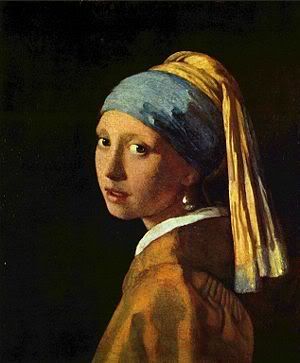
This theme depicts lives of people, hopes, dreams, and wishes that may be different or similar depending on that person's circumstances. I chose Girl with a Pearl Earring by Johannes Vermer, oil on canvas painted from 1665-1675. I saw the movie (forced by my wife) by the same name and it brought this painting to life for me. The face in the painting really stands out and contains such emotion. She seems surprised that someone would want to paint her and she also appears nervous at the same time.
Dada Art
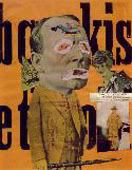
According to the text, Dada was "an international art movement that emerged during WWI (1914-1918). (583)" The works are intentionally shocking or provocative in order to spur conversations. This piece is a photomontage and collage created in 1919 by Raoul Hausmann.
This next Dada piece is by Marcel Duchamp. He took a reproduction of the "Mona Lisa" and drew a mustach on it as a statement against art that has become to commercial.
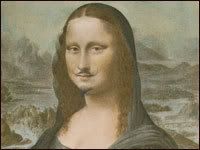
The following are various types of paintings:
Fresco
Fresco Art is art is created when pigments are mixd with water and applied to a plaster support like a ceiling (169). Michelangelo painted the ceiling of the Sistne Chapel from 1508-1512.
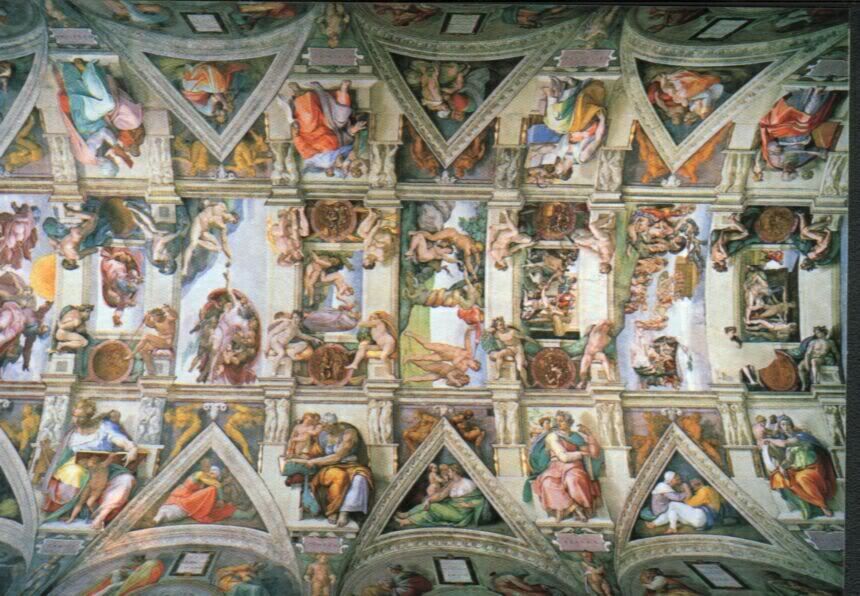
Watercolor
"Watercolor consists of pigment in a vehicle of water and gum arabic, a sticky plant substance that acts as teh binder." (177)
The following is a watercolor created by Carl Larsson in 1897. It is titled "Crayfishing".

Acrylic
Acrylic paints were the first major challenger to oil paints. They were created in the 20th century by chemists (179). They were first made commercially available in the 1950's. They dried much more quickly than oil paints making them very popular.
The following was created by David Hockney in 1967 with acrylic paint on canvas.
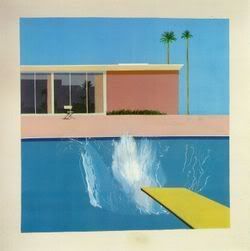
Another famous acrylic painting is Andy Warhol's "Campbell Soup" created in 1965 using acrylic on canvas.

These next two works are Photographs. Photography got it's start in 1826 and has changed art since it's inception. Photography allowed artists more freedom as they were no longer the only people able to capture things has they occurred.
This photo was taken by Ansel Adams in 1942. It is called "The Tetons and the Snake River"
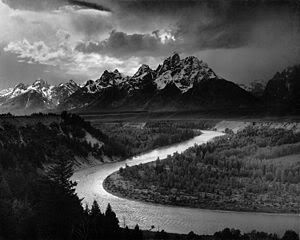
This photo was taken of Yankee Stadium on April 18, 1923 when it opened. I do not know the photographer but I love this pictures. I'm obviously a HUGE Yankee fan.
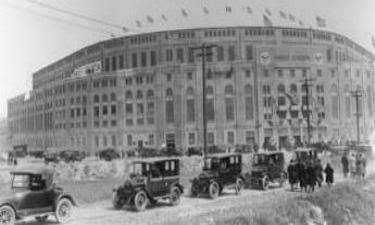
The following paintings are from the Impressionist period. My wife loves these paintings and always makes me spend time looking at them when we are in museums. These both are from the National Gallery of Art.
The first is "The Artist's Garden at Vétheuil" by Claude Monet with oil on canvas in 1880.

The second is "Picking Flowers" by Auguste Renoir in 1875 utilizing oil on canvas.
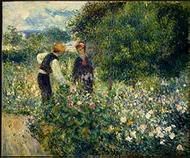
The next work is from the romantic period. According to the text this was "not a style so much as a set of attitudes and characteristic subjects" (507). It urged the use of imagination.
"Christopher Columbus and His Son at La Rábida" was created using oil on canvas in 1838 by Eugène Delacroix
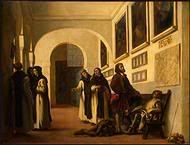
I like Representational Art because the subject is obvious. I like art that does not take a lot of dissection. Here are two works one that is representational and one that is abstract.
Representational:
"Farmhouse in Provence" oil on canvas by Vincent Van Gogh in 1888.
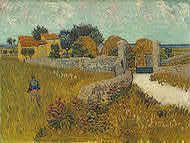
Abstract:
"Black Square" by Kazimir Malevich in 1915 with paint (one of four created).
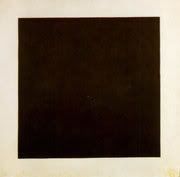
This last piece is a photograph, yes I know it's personal but I had to throw one picture in of my new daughter. She's my personal work of art...

Symmetry: "Propeller Heads" a photograph of a sculpture by David Baker 2004

According to the text, Symmetrical balance is the implied center of gravity is the vertical axis, an imaginary line drawn down the center of the composition (125). In this photograph, the image is the same on either side of the center making it symmetrical. I also find it interesting due to the reflection on the sculptures in the floor.
Asymmetry: "Mobile" a sculpture by Alexander Calder 1948

According to the text, an asymmetrical composition has two sides that do not match (129). This sculpture is very heavy on the right with only small objects on the left that do not balance it out, thus making it asymmetrical.
Chapter 3 discusses Themes in Art. The following are three works of art I enjoy that show three of the themes.
The first is the Sacred Realm (52)

Themes in the Sacred Realm depict faith. I choose the mosaic of Christ in Majesty that is on the ceiling at the Basilica at Sacre-Couer. It was created from 1920-1922. I have not been able to find the artist however. When my wife and I went to Paris last year, this mosaic really stood out to me. It was huge and very impressive. The tiles used to make the mosaic also glitered in the sunlight making it even more beautiful.
The next example deals with Politics and the Social Order (57)

Artworks dealing with Politics and Social Order can often depict the ideals of a society at a given point in time. I chose this poster of Rosie the Riveter created by J. Howard Miller during WWII. It represented women in the workforce during the War and it was used as a way to encourage women to leave the home and work in the factories while the men went off to war.
The last example I will show is from Looking Inward: The Human Experience (69)

This theme depicts lives of people, hopes, dreams, and wishes that may be different or similar depending on that person's circumstances. I chose Girl with a Pearl Earring by Johannes Vermer, oil on canvas painted from 1665-1675. I saw the movie (forced by my wife) by the same name and it brought this painting to life for me. The face in the painting really stands out and contains such emotion. She seems surprised that someone would want to paint her and she also appears nervous at the same time.
Dada Art

According to the text, Dada was "an international art movement that emerged during WWI (1914-1918). (583)" The works are intentionally shocking or provocative in order to spur conversations. This piece is a photomontage and collage created in 1919 by Raoul Hausmann.
This next Dada piece is by Marcel Duchamp. He took a reproduction of the "Mona Lisa" and drew a mustach on it as a statement against art that has become to commercial.

The following are various types of paintings:
Fresco
Fresco Art is art is created when pigments are mixd with water and applied to a plaster support like a ceiling (169). Michelangelo painted the ceiling of the Sistne Chapel from 1508-1512.

Watercolor
"Watercolor consists of pigment in a vehicle of water and gum arabic, a sticky plant substance that acts as teh binder." (177)
The following is a watercolor created by Carl Larsson in 1897. It is titled "Crayfishing".

Acrylic
Acrylic paints were the first major challenger to oil paints. They were created in the 20th century by chemists (179). They were first made commercially available in the 1950's. They dried much more quickly than oil paints making them very popular.
The following was created by David Hockney in 1967 with acrylic paint on canvas.

Another famous acrylic painting is Andy Warhol's "Campbell Soup" created in 1965 using acrylic on canvas.

These next two works are Photographs. Photography got it's start in 1826 and has changed art since it's inception. Photography allowed artists more freedom as they were no longer the only people able to capture things has they occurred.
This photo was taken by Ansel Adams in 1942. It is called "The Tetons and the Snake River"

This photo was taken of Yankee Stadium on April 18, 1923 when it opened. I do not know the photographer but I love this pictures. I'm obviously a HUGE Yankee fan.

The following paintings are from the Impressionist period. My wife loves these paintings and always makes me spend time looking at them when we are in museums. These both are from the National Gallery of Art.
The first is "The Artist's Garden at Vétheuil" by Claude Monet with oil on canvas in 1880.

The second is "Picking Flowers" by Auguste Renoir in 1875 utilizing oil on canvas.

The next work is from the romantic period. According to the text this was "not a style so much as a set of attitudes and characteristic subjects" (507). It urged the use of imagination.
"Christopher Columbus and His Son at La Rábida" was created using oil on canvas in 1838 by Eugène Delacroix

I like Representational Art because the subject is obvious. I like art that does not take a lot of dissection. Here are two works one that is representational and one that is abstract.
Representational:
"Farmhouse in Provence" oil on canvas by Vincent Van Gogh in 1888.

Abstract:
"Black Square" by Kazimir Malevich in 1915 with paint (one of four created).

This last piece is a photograph, yes I know it's personal but I had to throw one picture in of my new daughter. She's my personal work of art...

Subscribe to:
Posts (Atom)

